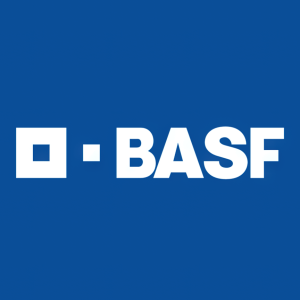California Research Alliance by BASF activates 100 research projects to address key sustainability challenges
- BASF and UC Berkeley extend alliance for another five years
- Research advancements presented at Spring Review event
- Notable research progress in inorganic and biobased materials
FLORHAM PARK, N.J., May 05, 2022 (GLOBE NEWSWIRE) -- The California Research Alliance (CARA) by BASF has led to 100 research projects between the chemical company and the more than 10 universities that are part of CARA since its establishment in 2014. The research projects in the areas of new functional materials, catalysis, chemical synthesis, engineering processes, biosciences, formulations and digitalization, have generated more than 30 patent applications and nearly 70 peer-reviewed articles. To continue this successful research approach, BASF and the University of California, Berkeley (UC Berkeley) signed a five-year extension of the CARA collaboration at its Spring Review event.
“The continuation of our partnership reinforces the importance of academic collaboration to support industry innovation for BASF,” said Dr. Detlef Kratz, designated President of Group Research, BASF SE. “At BASF, tackling sustainability challenges requires innovation and collaboration with external partners. As we have seen over the last eight years, the combination of our research power with the strength of the CARA network has led to many sustainability-driven breakthroughs and we are eager to see how they evolve into commercial products in the next years.”
“The open relationship created between BASF scientists and researchers in my group at UC Berkeley, and across the entire UC system, have enabled discussions in many forms,” said Professor John Hartwig, Henry Rapoport Chair, Department of Chemistry, UC Berkeley. “These discussions have led both sides to see opportunities for collaborative research on topics we never would have imagined alone and create opportunities to take academic research into new directions with an eye for practical outcomes with a positive effect on sustainability.”
Notable progress in inorganic material research to enable energy savings
CARA is a multidisciplinary research center, headed by the College of Chemistry at UC Berkeley. Since CARA began, BASF experts and researchers from UC Berkeley, UC San Diego and several other leading universities in California have worked together on multiple research projects to test new materials, evaluate new technologies and explore new processes that will help address key sustainability challenges.
A joint team in the field of inorganic material research is developing a stable, ligand-free semiconductor ink based on lead-free halide perovskites, which can potentially be used in coatings, electronics and catalysis.
Traditional semiconductor materials are usually not readily solution-processable and result in complex and energy-intensive fabrication processes. Based on its research, the CARA team has developed a novel semiconductor ink that can be patterned onto various materials and converted back to the pure solid-phase in air.
“The unique ability to rapidly transform back and forth between an easily processable semiconductor ink and the solid-state perovskite crystalline systema potentially enables energy-efficient fabrication processes,” said Dr. Kerstin Schierle-Arndt, Vice President of Research for Inorganic Materials at BASF and Associate Director of CARA. “The deep know-how on inorganic materials and applications from the CARA team combined with the guidance provided by UC Berkeley Professor Peidong Yang is proving decisive for the development of this new material.”
Algae in focus for biobased and biodegradable polymeric materials
Professors Steve Mayfield and Mike Burkart at UC San Diego aspire to develop novel biobased and biodegradable polymeric materials. Supported by CARA, they are working to develop aliphatic isocyanates from algae biomass using phosgene-free flow chemistry and demonstrate their biodegradability. In addition, the project secured
Professor Burkart has demonstrated flow chemistry-based production of aliphatic heptamethylene diisocyanate from algae-sourced azelaic acid on bench scale, while Professor Mayfield is working on engineering algae to produce new precursors. BASF expertise in polyurethane formulation and polymer biodegradation has been key to this project’s continued success with the goal to identify and commercialize biobased and biodegradable materials to achieve sustainability commitments and meet customer needs.
About BASF
BASF Corporation, headquartered in Florham Park, New Jersey, is the North American affiliate of BASF SE, Ludwigshafen, Germany. BASF has more than 16,700 employees in North America and had sales of
At BASF, we create chemistry for a sustainable future. We combine economic success with environmental protection and social responsibility. Around 111,000 employees in the BASF Group contribute to the success of our customers in nearly all sectors and almost every country in the world. Our portfolio comprises six segments: Chemicals, Materials, Industrial Solutions, Surface Technologies, Nutrition & Care and Agricultural Solutions. BASF generated sales of
Media Relations contact:
Betsy Arnone
973-519-9808
betsy.arnone@basf.com








